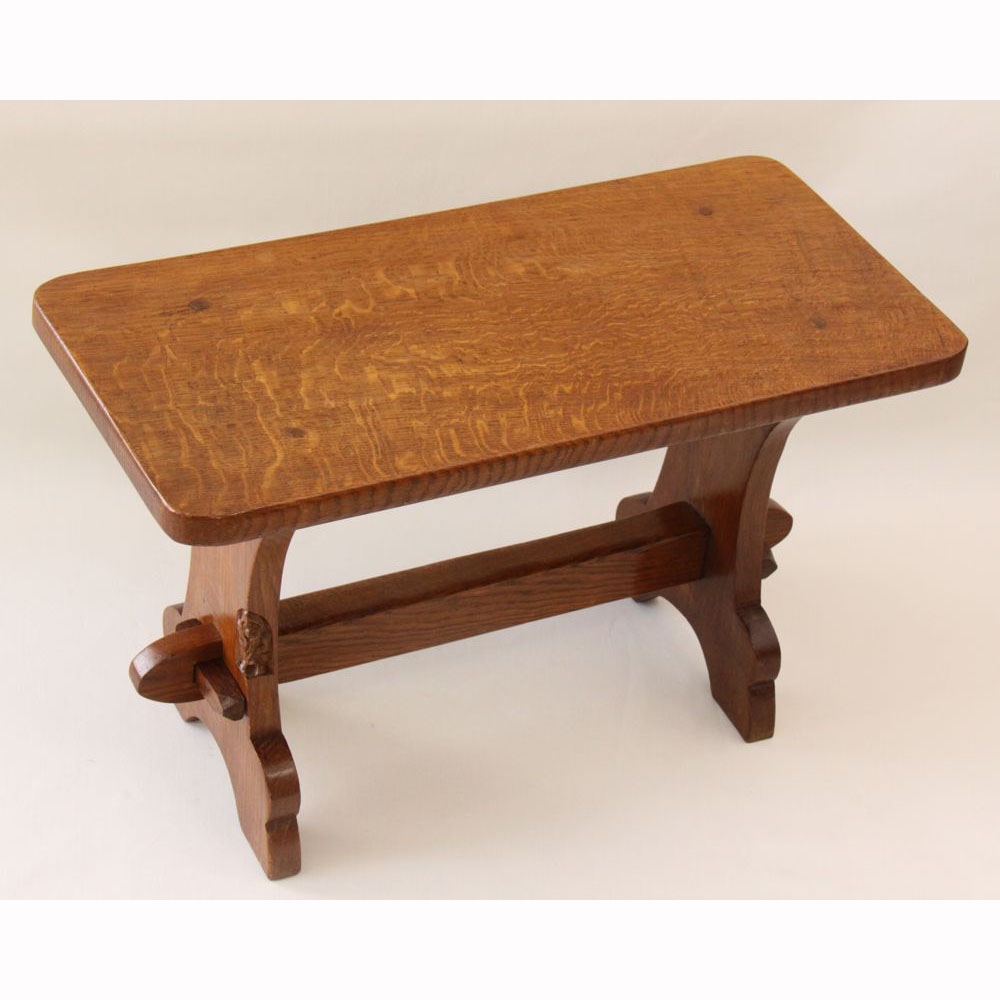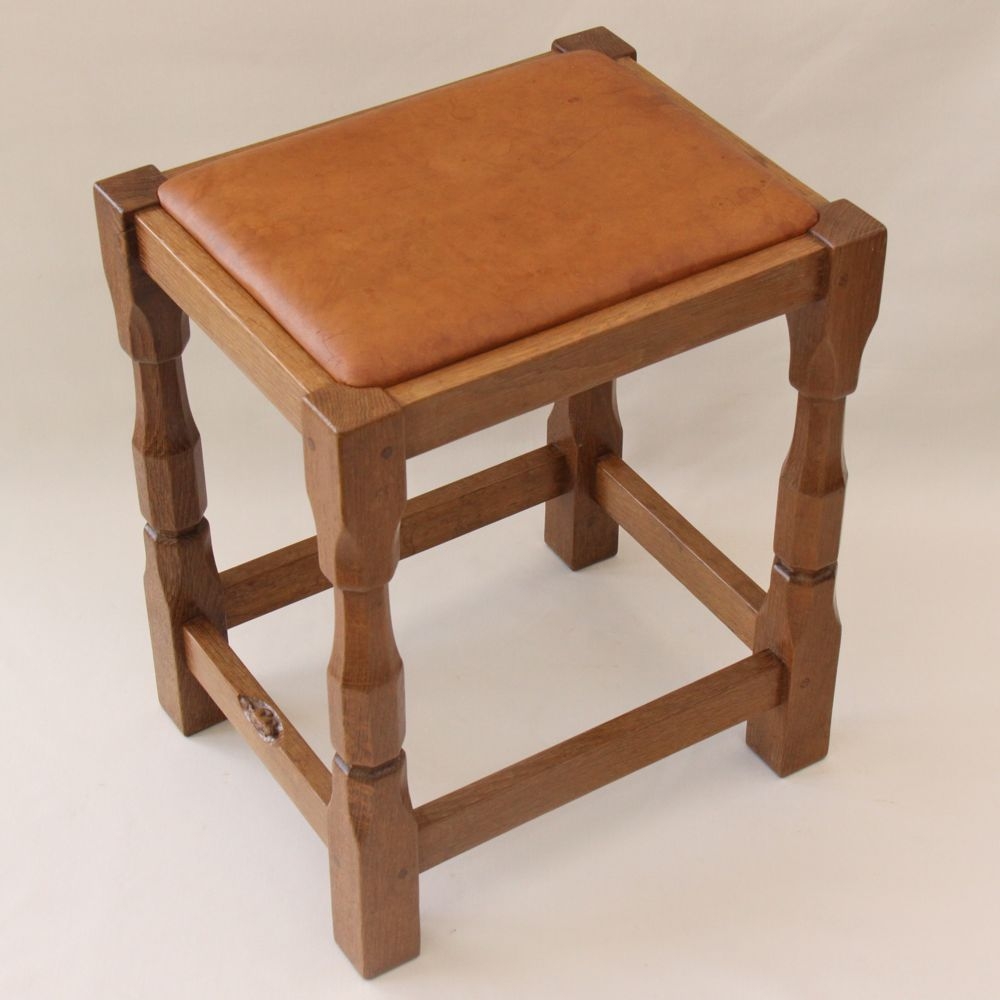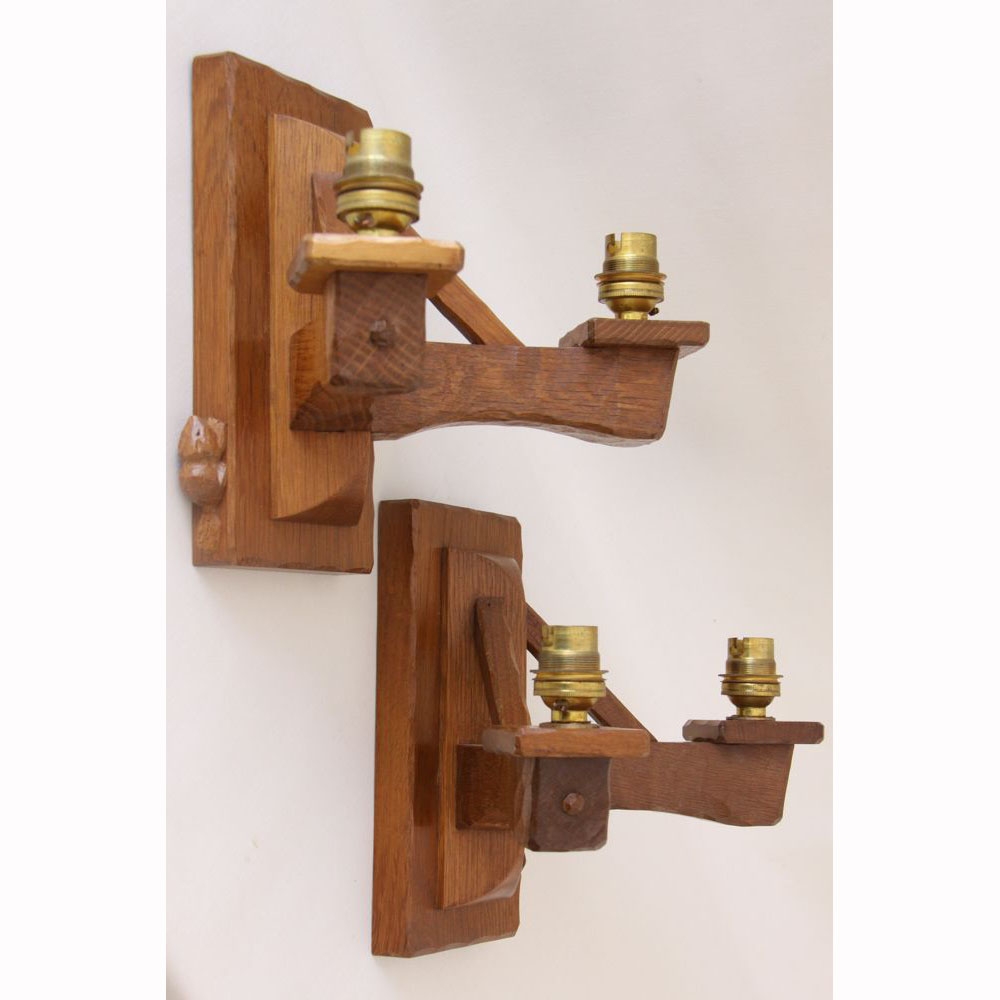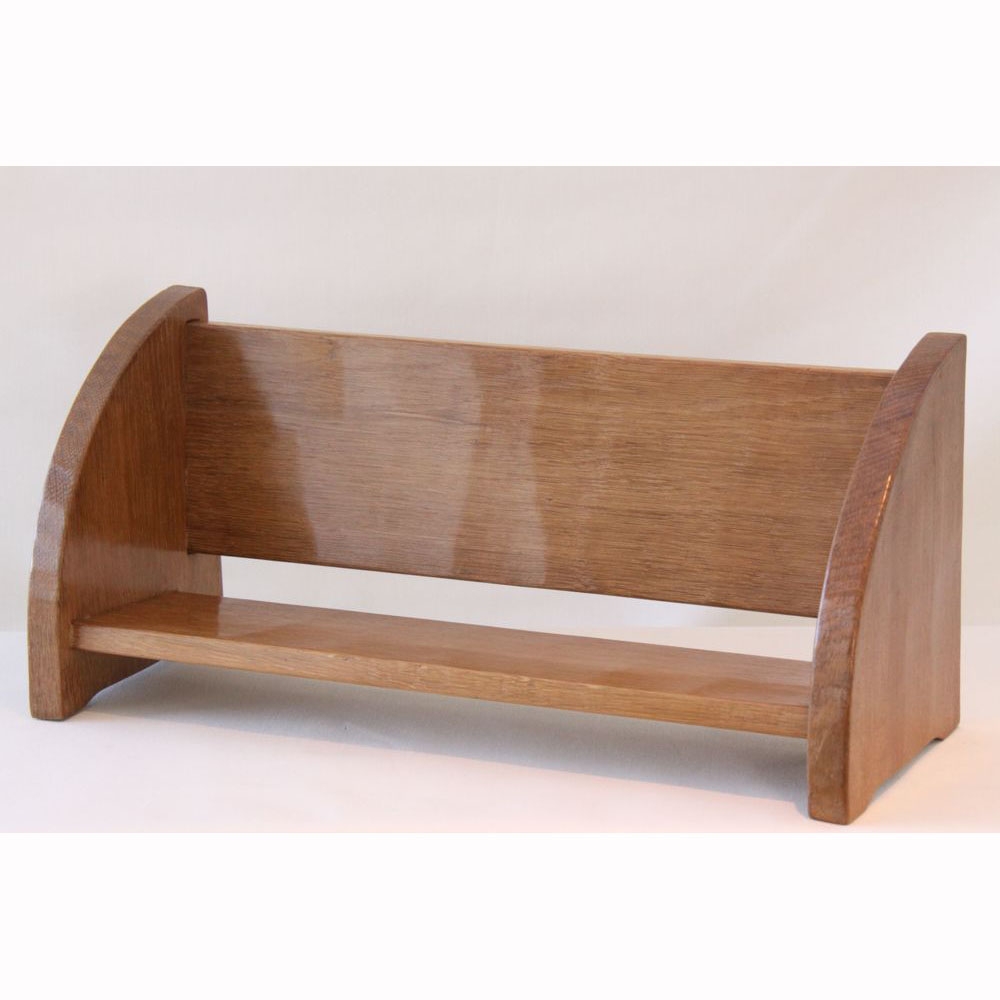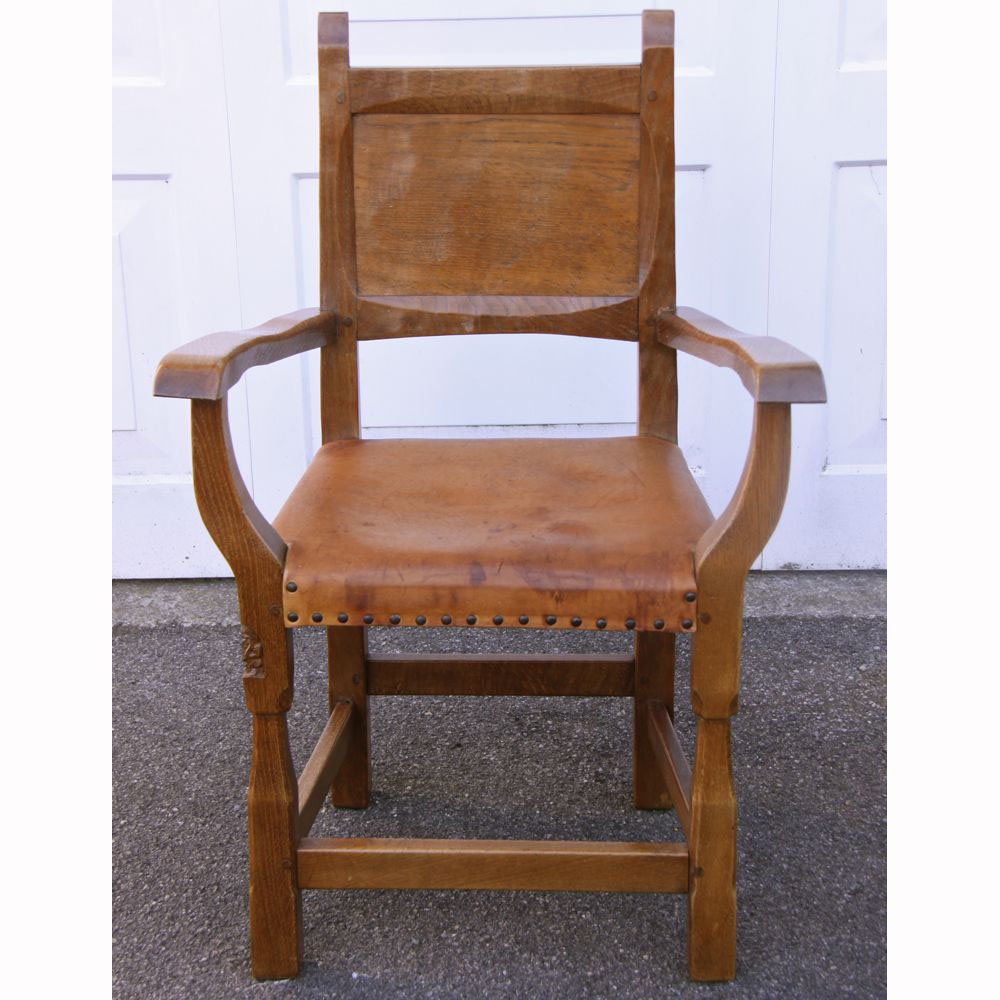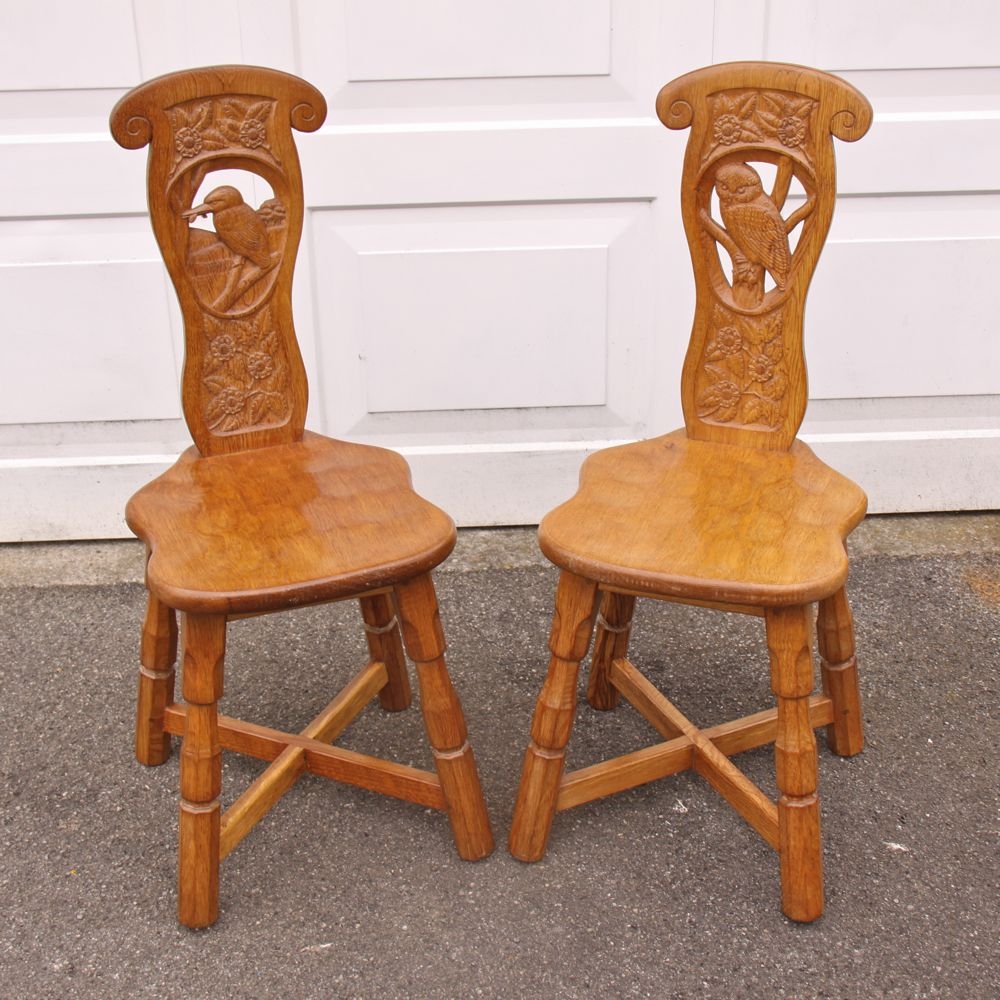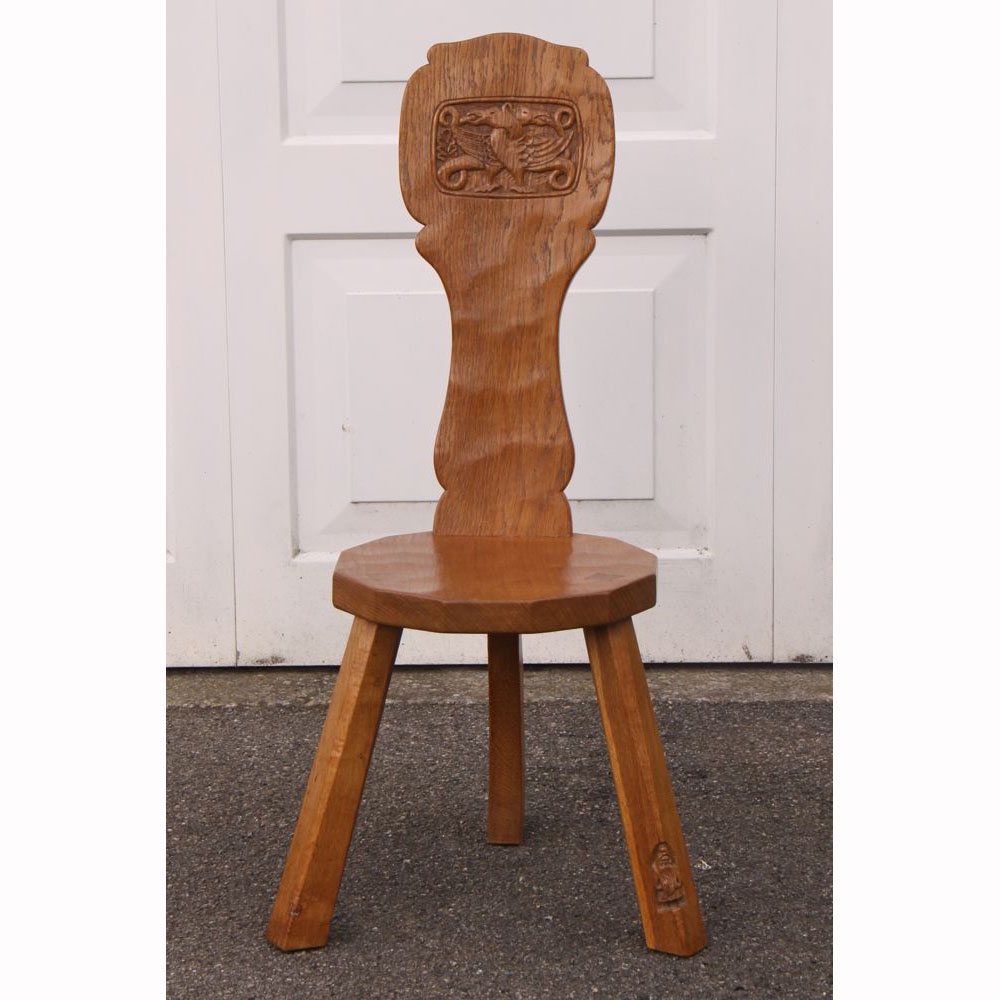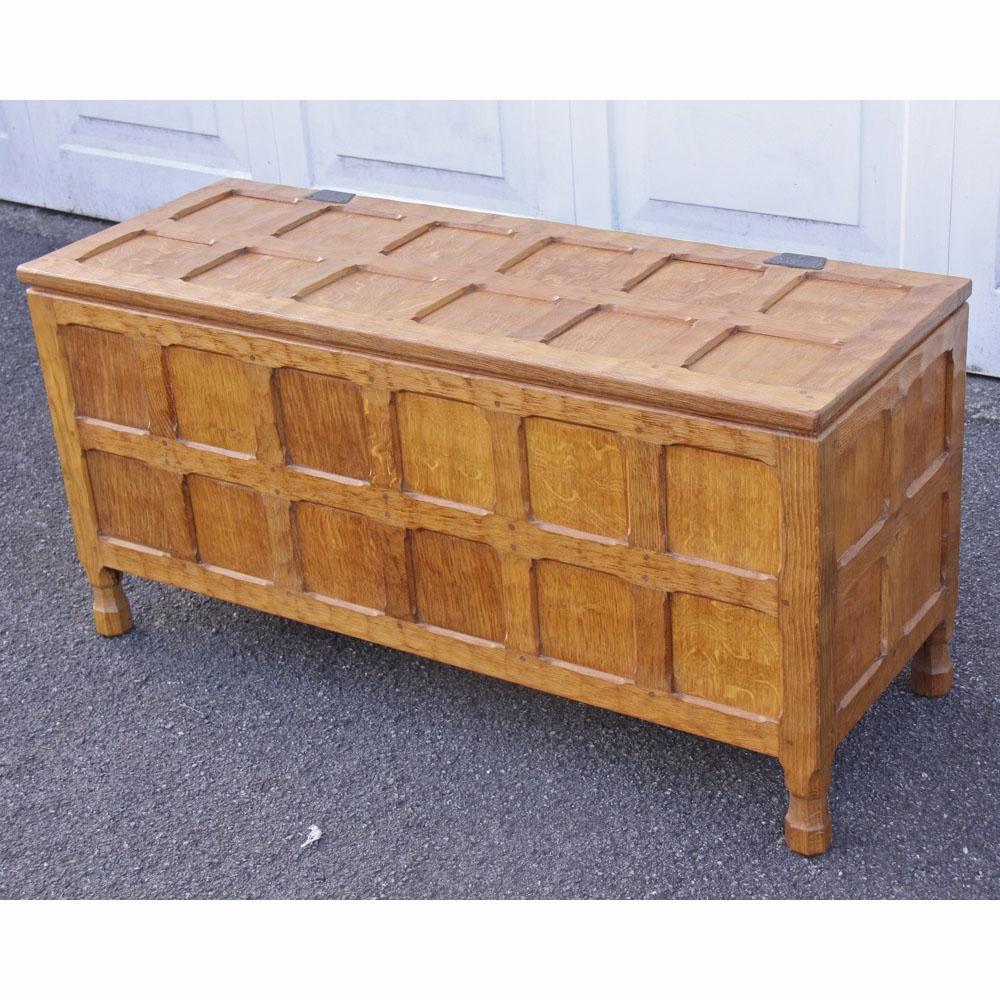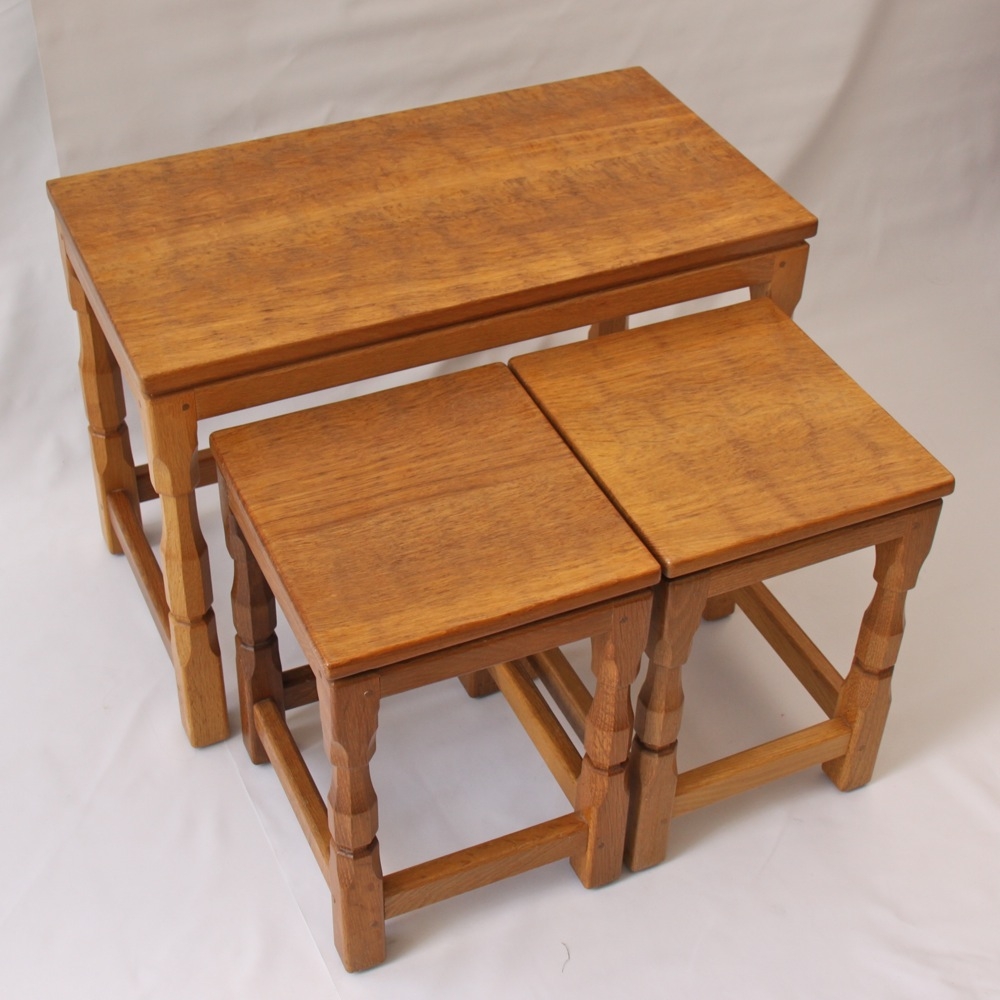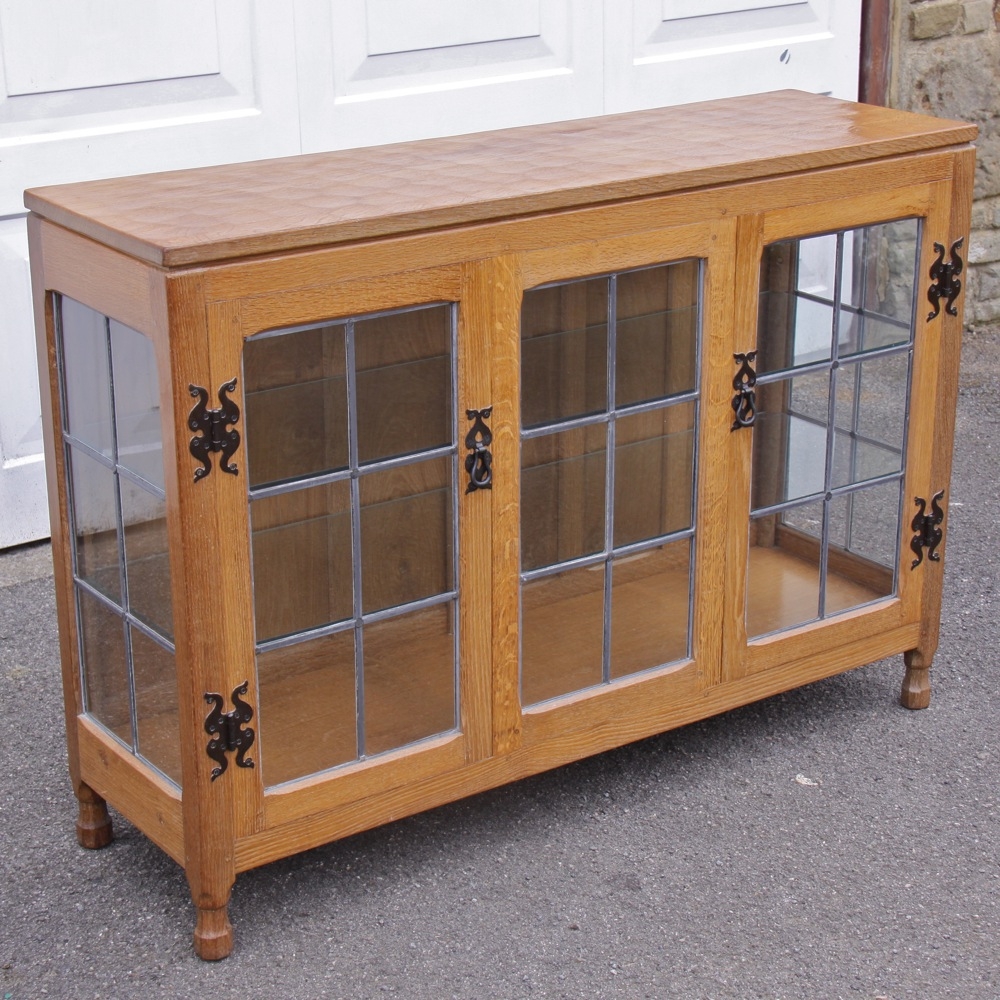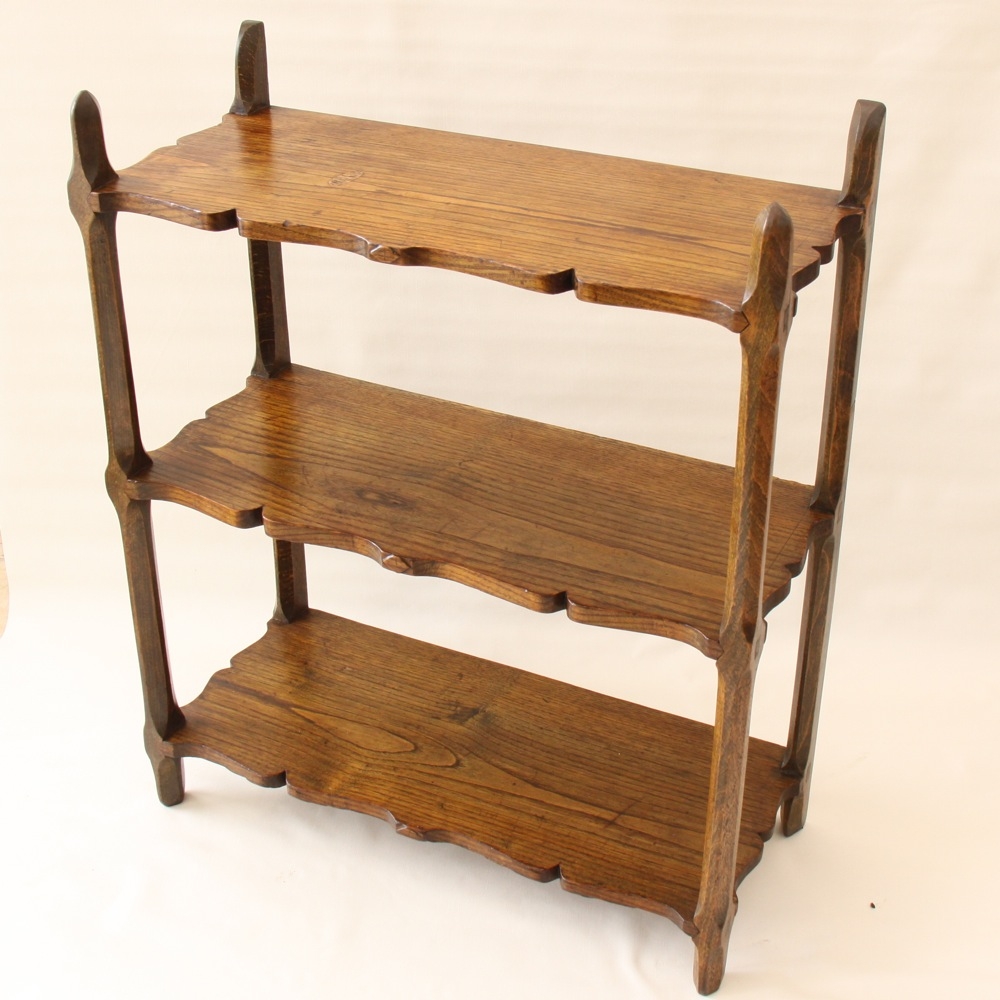Stock ref: DS1113
Circa 1960s
A lovely rectangular oak occasional side table of modest proportions, displaying Tom Whittaker’s distinctive artisan rustic charm and adzing to all visible sections. The top features a carefully selected piece of quarter sawn oak which displays superb golden medullary rays, contrasting wonderfully with the antique medium brown colour. The top is fixed by visible pegs onto two shaped and waisted end supports, joined by a pegged stretcher. All joints are solid with no movement, although there is a hairline wood split visible to the outer face of one end supports. A signature gnome is carved in recess to the middle edge of one end support.
Size: 60.5(w) x 29.5(d) x 37(h) cm
Thomas whittaker (1910 -1991) lived and worked in Littlebeck, near Whitby, North Yorkshire. His trademark gnome is carved onto all his work and was inspired by the legend that a gnome is born each time an acorn germinates and will guard that tree throughout its life. His work is now highly regarded and nearly as well known as Robert Thompson’s. His business ceased on his death and his former home and workshop is now a private residence. For those interested in learning more about his life and work i attach a link to a British Pathe newsreel from 1961. Gnomeman Thomas Whittaker
Sold
{gallery}DS1113{/gallery}




